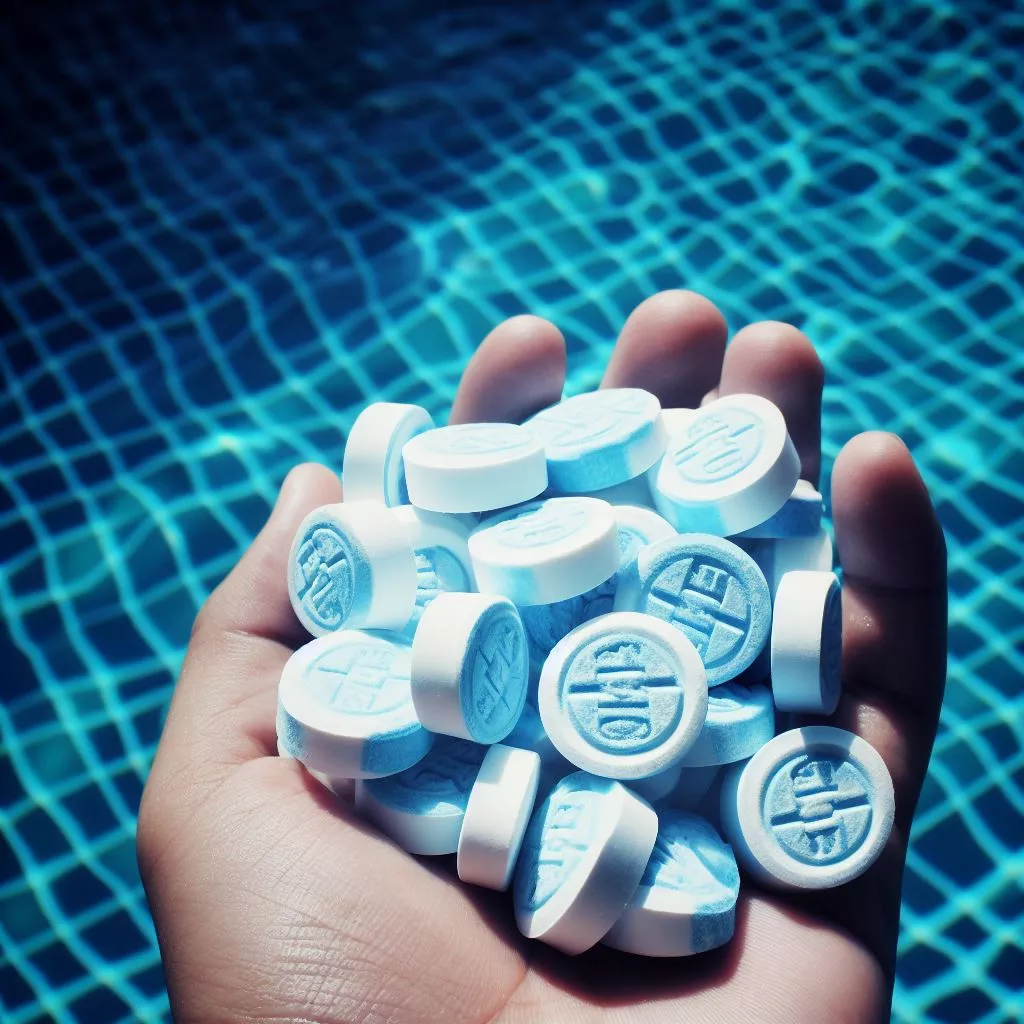To maintain the water quality of the swimming pool, adding a sufficient amount of chlorine tablets is often a crucial step in effectively controlling bacteria and microorganisms in the water. However, in some cases, even with the addition of many chlorine tablets, a sufficient amount of chlorine cannot be detected. This situation can be frustrating, but understanding the reasons behind it is essential for ensuring the quality of the swimming pool.

Possible Reasons for the Inability to Detect Chlorine
The ultraviolet (UV) factor in the swimming pool increases sharply, causing the rapid decomposition of chlorine in the water and leading to the swift depletion of residual chlorine. For example, during strong sunlight at noon, the residual chlorine in outdoor swimming pools may decrease.
With an increase in the pool’s load, more swimmers result in higher levels of pollutants in the water, leading to a rapid decrease in residual chlorine, possibly even exceeding acceptable limits.
The presence of a large amount of organic substances in the water, such as ammonia, nitrogen, urea, etc., can react with chlorine, making residual chlorine undetectable. These organic substances may come from swimmers’ skin flakes, sweat, saliva, women’s cosmetics, or fats.
If the water quality of the swimming pool is compromised, it could be due to management decisions to save costs, such as not changing the water for an extended period or not timely replenishing clean water, resulting in excessive residual chlorine.
In the pool’s filtration system, the accumulation of impurities can lead to the clogging of filters, affecting the uniform distribution of chlorine. Issues with the water pump or pipes can hinder the proper diffusion of chlorine throughout the pool.
Solutions to Address the Identified Issues
Adjusting Chlorine Dosage
Depending on the specific conditions of the swimming pool, a targeted chlorine dosing method can be adopted. If rapid chlorine depletion occurs due to an increase in UV index, consider increasing chlorine dosage during periods of lower UV radiation. This adjustment method better adapts to different light conditions, ensuring stable water quality.
Maintaining Fresh Water Quality
To address undetectable residual chlorine due to aging water quality, use water-activating agents or superchlorination. These agents effectively activate chlorine in the water, prolonging its residual presence and enhancing its germicidal effects. Adding a certain amount of water-activating agents or superchlorination per ton of water helps maintain water cleanliness.
Ensuring Water Cleanliness
Given that swimmers carry excessive organic substances, strengthening pool management is crucial. Swimmers should shower before entering the pool, wearing protective gear such as swim caps and goggles to reduce the entry of organic substances like skin flakes, sweat, saliva, etc. Regularly clear debris from the pool bottom and edges to ensure the normal operation of filters, reducing the impact of organic matter on chlorine detection and ensuring clear water quality.
Regular Cleaning of Filters
The pool’s filters need frequent cleaning. Regularly inspecting and cleaning filters can effectively prevent the accumulation of debris, ensuring water flow and the even distribution of chlorine gas.
In conclusion, controlling the water quality of a swimming pool is a complex and meticulous task that goes beyond the simple addition of chemical substances. To ensure that the chlorine ion content in the pool meets requirements, considerations must be made regarding water circulation, pollution sources, weather conditions, and more. Through careful management and regular inspections, we can ensure effective utilization of chlorine elements in the pool, creating a clean and healthy swimming environment.

 Instant
Quote
Instant
Quote Email
Us
Email
Us